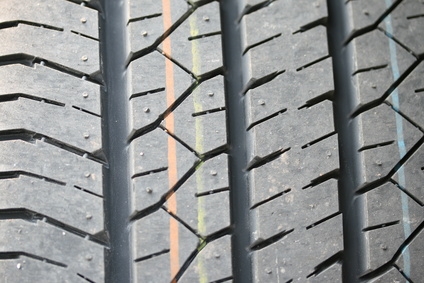
Snow tires are designed for one purpose -- safely driving in snow and ice. The tires' material is composed of rubber compounds that increase traction in cold climates with tread patterns that aggressively "bite" into snowy roads. Conventional, all-season tires don't offer these same features and are usually not optimized for use in cold, icy weather. These tires are designed primarily for dry conditions and wet-weather driving.
Select a tire for snow and icy conditions based on the tire manufacturer's ratings. Major tire companies continue to develop tires that perform optimally under harsh conditions. Handling and safety are significantly improved with these tires, and traction recovery is generally quick if safe driving procedures are followed. Goodyear, for example, rates its tires on a sliding scale from "1" to "10," with "10" being the highest rating. Goodyear's Eagle snow tire line is rated "10" in snow and "8" in ice. The manufacturer does not offer a mileage rating for this tire; however, dry traction drops to "7."
Compare the ratings for a fuel-efficient tire with those designed for snow and ice. The Goodyear Assurance Max claims 2,600 more miles per year on the same amount of fuel when using this tire. However, this tire only rates a "7" for snow traction. Dry traction is not much better, with a rating of "8." Mileage tires have low rolling resistance, so traction and handling are compromised. Snow tires are just the opposite and provide lots of traction. Mileage is significantly decreased with snow tires.
Tire manufacturers try to accommodate driving needs for all types of weather by developing all-season tires. Another example in the Goodyear tire line is the Assurance TripleTred that claims a "10" rating in dry, wet or snow conditions. This tire uses three types of tread design; however, this tire is not designed for maximum gas mileage. It is designed for any weather condition without having to swap out tires when cold and ice are present.
Increase your tire inflation in cold weather. Tires that are properly filled in 90-degree weather are severely under-inflated in 20-degree weather by 3 to 4 pounds or more. Proper inflation improves traction so check with the tire manufacturer and reference its inflation pressure chart. Mount the best tires on the rear of the car. With the heavy car engine in the front, the rear is much lighter and more likely to "fish-tail" in ice or snow. This means the rear tires are more likely to lose traction and swerve out of control. By having the best tires on the rear, the vehicle is more stable, and driving is safer.